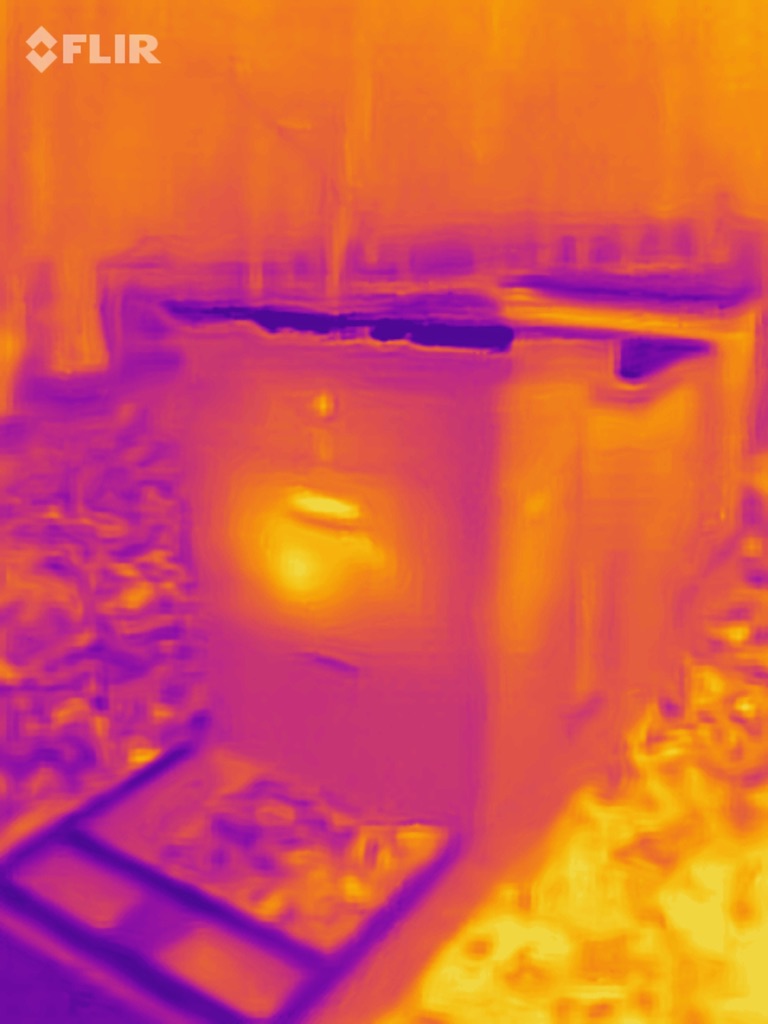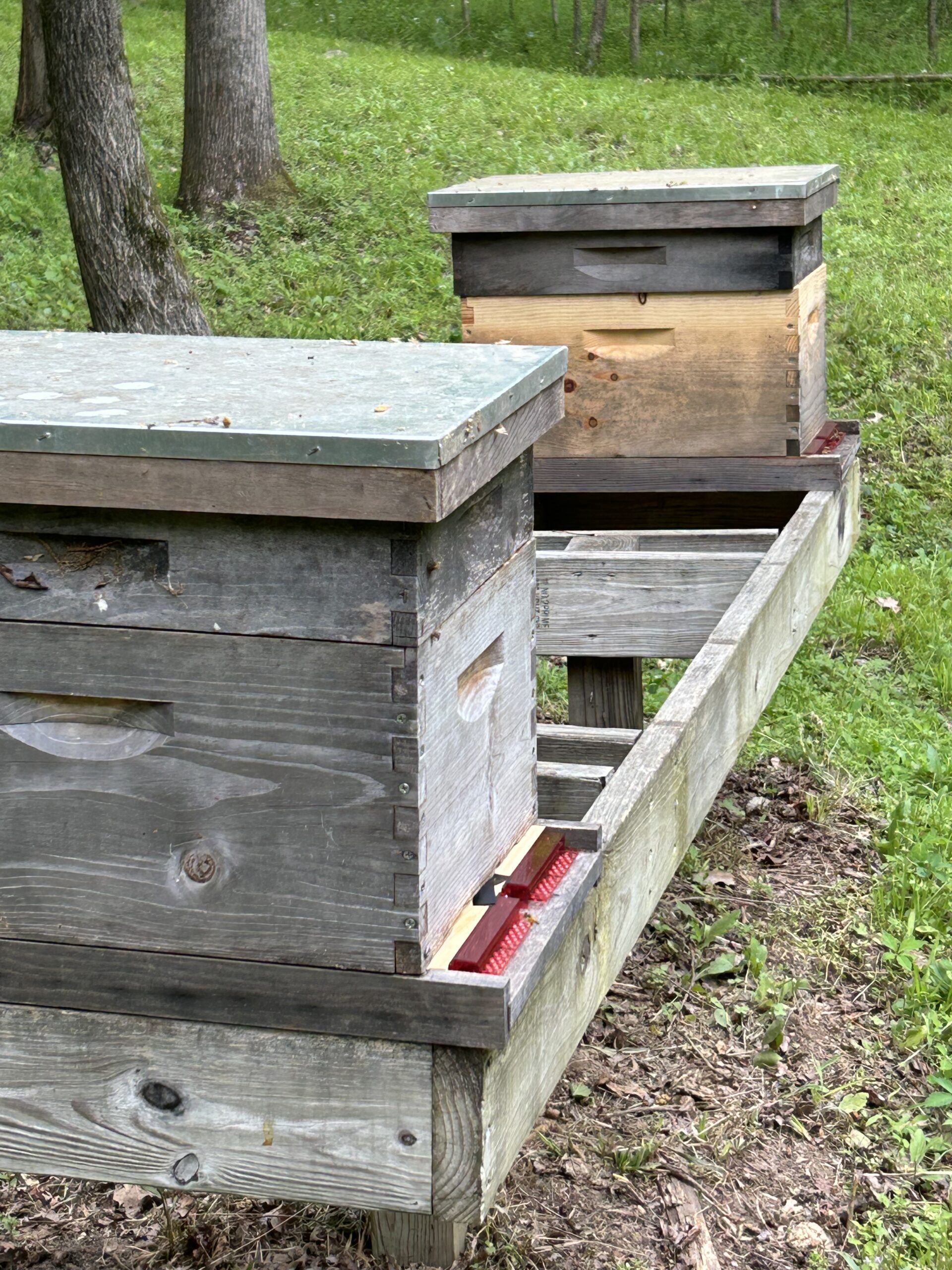The primary goals of beekeeping are straightforward. Make sure they have enough space. Make sure they have enough food and water. Control nasty bugs. And get them through the winter.
Hives that make it through the winter are the most reliable honey producers the next summer.
I prefer to harvest early in the summer, leaving whatever they collect in the summer and fall to eat over the winter. Plus, the fall honey here is mostly made from goldenrod. Not my favorite. My wife describes the taste as being like “old tennis shoes.” I’ll have to take her word for it about the shoes, but I can imagine that’s what they would taste like. I suppose it’s OK in tea when you want the sweet and can mask the taste, but on the whole it’s not worth it.
Right about now, the bees and I are both preparing the hives for winter. The big bee activity is evicting the drones. You see, the drones, or male bees, develop from unfertilized eggs. Any worker bee can lay an egg that becomes a drone. Opening up a hive and seeing a lot of drone brood is a bad sign since it means that it might not have a laying queen.
Most of the time the life of a drone is pretty sweet. Unlike the workers, they are helped out of their cell when they are born. They are fed and groomed. They are brought beer and sandwiches while watching football. Their only purpose in life is to spread the hive’s genetics by mating. So, eventually they fly out in search of a queen. They have huge eyes.
In a fascinating example of conservation of structure, the drone endophallus is analogous to the worker bee stinger. Right down to the barbs and the contracting sac that delivers sperm instead of venom. And the ripping out of the guts afterwards. After mating the drone dies.
The thing is, in the fall and winter there aren’t any queen bees around looking to mate, and the hive doesn’t need any useless mouths to feed. Recall that any worker bee can lay a drone egg, so the hive can just make more in the spring. So, they drive the drones out. Literally. They get dragged out the front door. Drone larvae, too. My wife and I once watched drone larvae get dragged out and thrown overboard.
For my part, feeding is the first of two keys to winter survival.
Besides leaving the honey, I will feed them. Sugar water until the highs are in the upper 30s, and then when it gets colder they get “bee burgers.” They consist of sugar and barely enough water to press the sugar into patties. They look like white hamburgers. They just sit on top of the frames and the bees eat right through them. The leftover honey, a gallon or two of sugar water, and a couple bee burgers are usually plenty to feed a hive through the winter.
The other leading reason for finding dead bees in the spring is freezing.
It happens in an insidious way. The bees keep each other warm during the winter by forming a ball inside the hive and vibrating their wing muscles. As those in the middle of the ball get warm, they migrate to the outside. As those on the outside of the ball get cold, they migrate to the inside. While they don’t actually heat the space around them, it does warm up a little bit. This causes moisture to condense on the underside of the hive lid. Drops of water fall on the ball of bees, freezing those that it lands on. It’s like killing the hive one peel of onion skin at a time.
The first spring after the first year I kept bees I went out to the two hives in early spring to find two inches of dead bees at the bottom of each. It was heartbreaking. I vowed never to let that happen again. And that’s the purpose of the bee quilt.
A bee quilt is simply a short frame with a burlap bottom filled with wood chips.
Instead of the condensation falling onto the ball of bees, it falls into the wood chips and is absorbed. The bees are kept dry and happy and alive. Beekeepers differ on whether hives need to be insulated in the winter. Most in the north do, and most in the south do not. But everyone agrees on the importance of ventilation. A bee quilt takes care of both the condensation issue and the ventilation issue.
I’ll check on the hives a couple times over the winter when the temperature pops up above about 50 degrees. Below that there isn’t much activity. Not even guard bees around the entrance. I use an infrared FLIR camera to confirm that there’s a ball inside. I love watching the hive during a warm spell. The bees will make cleansing flights outside the hive (yes, bees poop) and it looks like a time lapse video of a busy airport. Best of all, it’s confirmation that they’re making it through the winter and will be ready for a busy new year.

